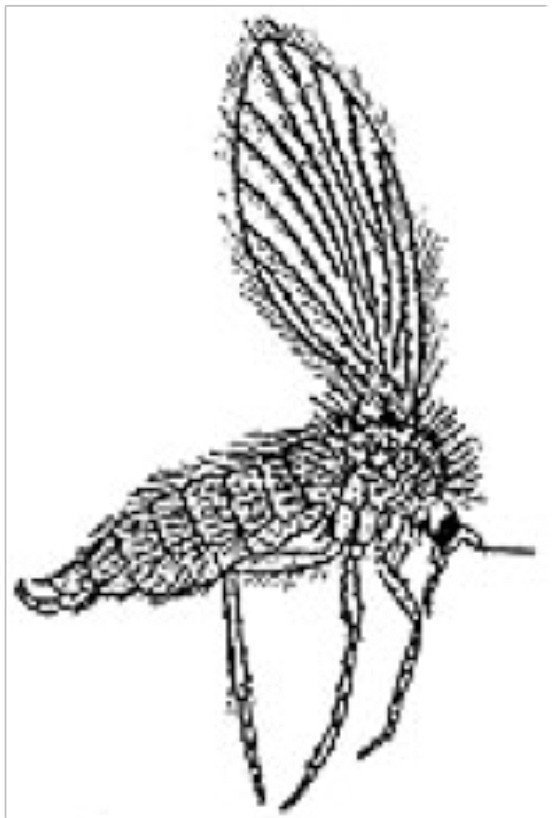Q: We are seeing little flies in our house. Are they anything harmful, like termites? How problematic is this and can anything be done?
A: Thanks for dropping off a sample. I always enjoy seeing these little creatures popping up in the cold months, when little else is flying. They are pretty much harmless, so don't worry about them. They are reviewed in the University of Missouri's Extension publication "Household Flies." Moth flies (Psychodidae) are also known as drain, filter or sewage flies. They are tiny flies and their bodies and wings are densely covered with hair. The wings are held roof-like above the body when at rest. Indoors, moth flies breed and the larvae develop in the wet, gelatinous material that lines the inside of drainpipes. The life cycle from egg to adult can take as little as eight days or as long as 22 days, depending on temperature. In most situations, adult flies appear suddenly in the vicinity of sinks or drains. They are commonly noticed on the bathroom mirror.
They are only ominous if you have a lot of them. This might indicate a build-up in a drainage pipe or garbage disposal. They would be a symptom of the problem, not the cause. Look into fixing the problem instead of worrying about how to kill them.
Q: What types of seedless grapes do well here? Do you have any recommendations? I am also interested in wine grapes. Can I find information on their resistance to diseases?
A: There are quite a number of seedless grapes that will grow in Missouri. Stark Bro's nursery sells about 10 different cultivars. Many gardeners don't realize there is even a seedless Concord grape. Why fuss with the seeds if you can have them without? Somewhat new is a series of seedless grapes released from the Arkansas breeding program. I'm not sure who named them, but I call them the "altruistic" table grape series. Gratitude & Hope (green) and Faith & Joy (blue) are available and less likely to retain any part of the seed. I'm waiting for the release of "love."
Disease ratings for grapes are posted in a publication titled "Midwest Fruit Pest Management Guide." I would suggest you Goggle title and access the PDF. The disease rating for grape cultivars is on page 94.
Q: I have a small maple tree having a rough time. The top of it died, but then grew back. It has since gotten cracks in the trunk at different spots and seems to be getting insect damage at these spots, but I can't find any bugs. What is happening and can I save this tree?
A: Stressed maple trees can be prone to attack by borers. This is made worse if they get sunscald, which is most likely to occur toward the south to southwest direction. If this damage is in that direction, tree wrap put on in November and removed in March can help. One can't easily find borers, but one can see that damage is occurring inside the trunk/branch at those damage areas.
To kill/control borers, you can use a soil applied systemic insecticide. An example of this is manufactured by Bioadvanced (sold in a blue bottle). They have a couple types labeled as 12-month tree and shrub protection. As a systemic, it gets into the interior where the insect pest is. There are other companies selling a similar product with the active ingredient imidacloprid. A systemic insecticide combined with tree wrap should help.
If the damage is less than half of the area of the branch or trunk of a small tree (in circumference), I would see if it would heal over. Sealer won't hurt anything and will aide in keeping track of its recovery. Be sure to establish a mulch ring around the base of the tree. A mulch ring 4-6 feet in diameter and about 2-3 inches thick will reduce moisture loss and grass or weed competition. Watering during dry spells will help, and you should fertilize the tree annually until you are satisfied with its growth.

